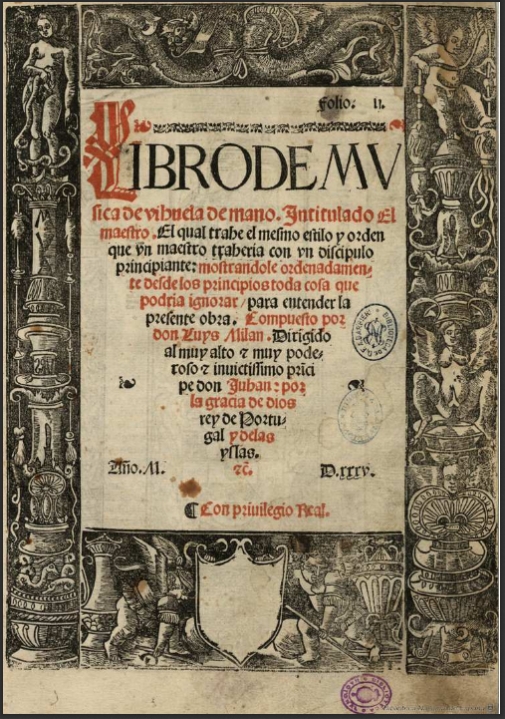Luis de Milán: Sospirastes Baldovinos
Sospirastes Baldovinos
Las cosas que yo mas quería,
O teneys miedo á los moros
O en Francia teneys amiga
No tengo miedo á los moros
Ni en Francia tengo amiga
Mas tu mora y yo cristiano
Hazemos muy mala vida
Si te vas conmigo en Francia
Todo nos será alegria:
Haré justas y torneos
Por servirte cada’l dia
Y verás la flor del mundo
De mejor cavalleria:
Yo seré tu cavallero
Tu serás mi linda amiga
Vágyad súgja sóhajtásod
Válasz rá ím, szemem könnye,
Vagy tán féled népemet, a mórt,
Vagy Frankföldön él tán szíved hölgye?
Nem, nem félek senki mórtól,
Frankok közt sincs az én szerelmem,
Ám te mór vagy, és keresztény én,
Hogy élhetnénk itt mi ketten békességben?
Ám, ha eljönnél vélem Frankföldre,
Várna ránk ott végre áldott béke,
Bajvívásban érted megküzdnék
S szolgálnálak éjt nappá téve.
Jöjj! Vár ránk Frankföldnek sok szép virága
Bajnokoknak éke, színe, dísze.
Büszke lész rám, hű lovagodra,
S lész te hölgyem, szívem drága kincse.
Translation by
GáborDomján
You sighed out Baldovinos
All I would like the most
Or are you afraid of the Moors?
Or do you have a girlfriend in France?
No, I’m not afraid of the Moors
And I don’t have a girlfriend in France
But you being a Moor woman and me a Christian man
We would have a very bad life.
But f you come with me to France
There will be happiness for us
I will joust and fight in knightly tournaments
To serve you every day.
You will see the flowers of the world
The best ones of knighthood
I shall be your knight
And you shall be my beloved lady.
(non-literary, verbatim translation)
DESCANT LUTE
Built by: Bernd Holzgruber (’Wien 1979’)

This romance is a lyrical love-song, a dialogue, written by Luis de Milán (~1500-~1561) in his Libro de música de vihuela de mano; Intitulado El Maestro (1536) which was the first vihuela publication in the 16th century.
The vihuela was the popular version of the lute in Spain. Its shape resembles the guitar though it’s light structure and tuning follows the lute. My vihuela is tuned as: e’e’, bb, f# f#, dd, AA, EE, but sometimes I tune it down a full or a semitone for singing purposes. There’s a remark in a contemporary script saying that transposing the accompaniment to fit the singer’s vocal range should be avoided. It is advised to pick an appropriate size and accordingly tuned vihuela instead, one that fits the singer’s voice. Having only one vihuela, the choice was to retune it, but even that didn’t help in distinguishably but still acceptably sing the female and male parts in the dialogue so I chose a descant lute for the accompaniment instead.


